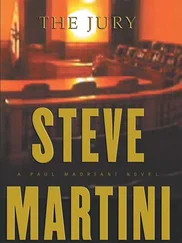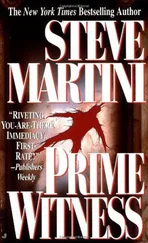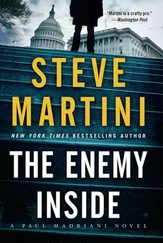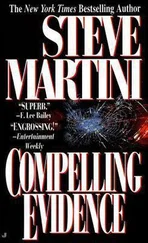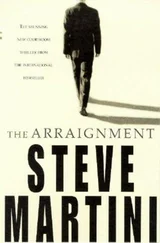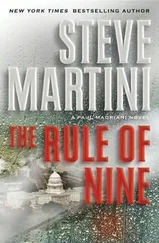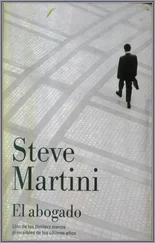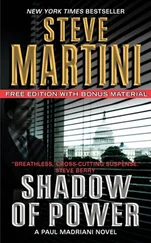Steve Martini - The Judge
Здесь есть возможность читать онлайн «Steve Martini - The Judge» весь текст электронной книги совершенно бесплатно (целиком полную версию без сокращений). В некоторых случаях можно слушать аудио, скачать через торрент в формате fb2 и присутствует краткое содержание. Год выпуска: 2011, Издательство: Penguin Group US, Жанр: Триллер, на английском языке. Описание произведения, (предисловие) а так же отзывы посетителей доступны на портале библиотеки ЛибКат.
- Название:The Judge
- Автор:
- Издательство:Penguin Group US
- Жанр:
- Год:2011
- ISBN:нет данных
- Рейтинг книги:4 / 5. Голосов: 1
-
Избранное:Добавить в избранное
- Отзывы:
-
Ваша оценка:
- 80
- 1
- 2
- 3
- 4
- 5
The Judge: краткое содержание, описание и аннотация
Предлагаем к чтению аннотацию, описание, краткое содержание или предисловие (зависит от того, что написал сам автор книги «The Judge»). Если вы не нашли необходимую информацию о книге — напишите в комментариях, мы постараемся отыскать её.
The Judge — читать онлайн бесплатно полную книгу (весь текст) целиком
Ниже представлен текст книги, разбитый по страницам. Система сохранения места последней прочитанной страницы, позволяет с удобством читать онлайн бесплатно книгу «The Judge», без необходимости каждый раз заново искать на чём Вы остановились. Поставьте закладку, и сможете в любой момент перейти на страницу, на которой закончили чтение.
Интервал:
Закладка:
It hits me in this instant as he walks away, the magnitude of this revelation. There is something missing in the equation of Brittany Hall, something lurking that he senses but does not know, a missing element to the prosecution’s case, and Kline believes that Lenore has it.
CHAPTER 23
Today Kline is using the state’s trace evidence expert to further reinforce the view that Hall did not have sex, either consensual or forced, before she was killed. For some reason unknown to us, he anticipates this will be our theory, that some lover killed her. He wants to dispel any thought of this in order to focus attention on what he claims is the true motive for this crime, the silencing of a judicial witness.
Kline seems a growing presence in the courtroom, even if he knows that the strength of today’s evidence is too general-common hairs and threads-to be overwhelming. It is still one piece that fits in his puzzle.
Today he has Harold Stinegold, the state’s foremost expert on hair and fibers, a career civil servant of the State Department of Justice, on the stand. If it fits under a microscope, Stinegold has probably looked at it.
He testifies that fingernail clippings and scrapings from Hall show no foreign tissue, and that pubic combings of the victim confirm there was no evidence of foreign hair, which would be present if there had been sexual intercourse.
Stinegold is a man in his early sixties, affable and confident. I have had him in court on several occasions, and have found that he is exceedingly conservative. He will not usually stretch the evidence.
Kline uses high drama, having Stinegold remove the blanket with its blotches of dried blood from a paper evidence bag, cutting the seal open on the stand. He does the same with a second, smaller bag containing hair, and a third with fibers.
“Can you tell us about these?” says Kline. “How were they collected and analyzed?”
“The hair and fibers were lifted off the surface of the blanket by use of cellophane tape, as you might lift lint from a suit. They were transferred to a slide and first examined under a microscope.”
“Let’s stick with the carpet fibers first,” he says. “Were you checking these against samplers taken from another source?”
“Yes. Carpet fibers from the defendant’s county-assigned vehicle.”
“And what did you find?”
“I looked first to determine if there were comparisons of color and diameter. I found that there were.”
“What did you do then?” says Kline.
“A more detailed examination,” says the witness, “for other morphological features.”
“What do you mean, morphological?”
“Form and structure,” says Stinegold. “In particular, I was looking for striations on the surface of the fibers or pitting with delustering particles. Principally titanium dioxide,” he says. “These are sometimes added in the manufacturing process with synthetics to reduce the amount of shine.”
“And what did you find?”
“I observed the presence of similar delustering particles both on the carpet fibers from the defendant’s vehicle, and the fibers retrieved from the blanket used to wrap the victim’s body.”
“You considered this to be a significant point of comparison?”
“I did.”
“What did you do next?”
“I examined for color,” says Stinegold. “Color would be the most important differential.”
“Why is that?”
“Because most colors are composed of a mixture of dyes to obtain a desired shade. Finding the same dye composition would be a significant marker. It would be a unique distinguishing characteristic,” says Stinegold.
“And how would this be done?” says Kline.
“With the use of a microspectrophotometer.” Stinegold has to spell it for the court reporter.
“It’s a kind of microscope that compares colors of fibers through their spectral patterns. Without getting too technical, different fibers not only have different colors, but they emit differing light refractions, which can be measured with the proper equipment.”
“And you did this?” says Kline.
“Yes.”
“And what did you find?”
“That the fibers found in the defendant’s vehicle, his county-assigned sedan, were identical in form, color, and composition to the fibers found on the blanket used to wrap the victim’s body.”
Kline takes him through the specifics, that there are five different types of nylon used in such manufacture, one of these being what is known as “nylon 11.” In this case it is finished with a pigment that is ocean blue in color. These are two points of comparison-the type of nylon and a dye lot-that the witness says match the fibers on the blanket with those found in Acosta’s car.
“In your professional opinion, would you consider such a comparison significant?” Kline tries to close the door.
“Objection. Vague,” I say.
“Sustained. Rephrase the question,” says Radovich.
The issue here is how significant. Kline does a little circle in front of the stand, thinking before he rephrases.
“If you examined those carpet fibers and compared them to another sample taken randomly from another carpet, in your professional opinion, would you expect to find a match similar to what you found here?”
I raise the same objection, but this time Radovich overrules it.
“No.”
“If you compared it to ten other random samples would you expect a match?”
“No.”
“A hundred?”
“Not likely.”
“A thousand?” says Kline.
“The type of nylon perhaps,” says Stinegold. “But the color pigment, particularly the dye lot, would set it apart. I would call it a more significant characteristic.”
“Not responsive to the question,” I object.
“Overruled.”
“So in your opinion this is significant?”
“Yes. Unique to that dye lot. The manufacturer seldom if ever mixes two dye lots resulting in precisely the same pigmentation.”
“So that would be a unique characteristic of these fibers?”
“I would say so. Yes.”
Kline then turns his attention to the hair, which Stinegold identifies as animal in origin.
He goes into some detail on the myriad of distinctions between human and animal hair, the color banding that is distinctive in animal hair, while human hair is uniform in color throughout the shaft.
“The medulla at the center of the hair of a human is amorphous in appearance, seldom more than a third the width of the entire hair shaft,” says Stinegold, “whereas in animals it is much wider and can consume nearly all of the shaft. Also, the outer cuticular surface varies markedly between humans and animals, the difference being quite apparent.”
“So there’s no question in your mind that the hairs collected from the surface of the blanket used to wrap the body of Brittany Hall were animal in origin?”
“None whatever,” says Stinegold.
“Could you determine what kind of animal?”
“That was more difficult,” he says. “But through process of elimination I was ultimately able to determine that the hairs in question were equine.”
It is clear from the looks in the box that the jury had suspected a dog or cat. Kline plays along with this and in feigned surprise gives the witness arched eyebrows, a silent question.
“Horse hair,” says Stinegold in reply. “Probably sloughed off during shedding. There was a considerable amount of it.”
“Do you have an opinion as to how this hair came to be deposited on the blanket?”
“Probably a secondary transfer,” says Stinegold.
Prodded by Kline, the witness explains.
“In general terms, what this means is that the blanket itself did not come in contact with a horse. Instead it is likely that someone else got the hair on their clothing and either carried it to the blanket or perhaps to their residence, where it got on other things, furniture, bedding. The blanket could have become impregnated with the hair there, or it is even possible that the killer picked it up on his own clothing at that point, and by rubbing the blanket against his clothing while wrapping the body, may have left the hair on the surface of the blanket.”
Читать дальшеИнтервал:
Закладка:
Похожие книги на «The Judge»
Представляем Вашему вниманию похожие книги на «The Judge» списком для выбора. Мы отобрали схожую по названию и смыслу литературу в надежде предоставить читателям больше вариантов отыскать новые, интересные, ещё непрочитанные произведения.
Обсуждение, отзывы о книге «The Judge» и просто собственные мнения читателей. Оставьте ваши комментарии, напишите, что Вы думаете о произведении, его смысле или главных героях. Укажите что конкретно понравилось, а что нет, и почему Вы так считаете.


